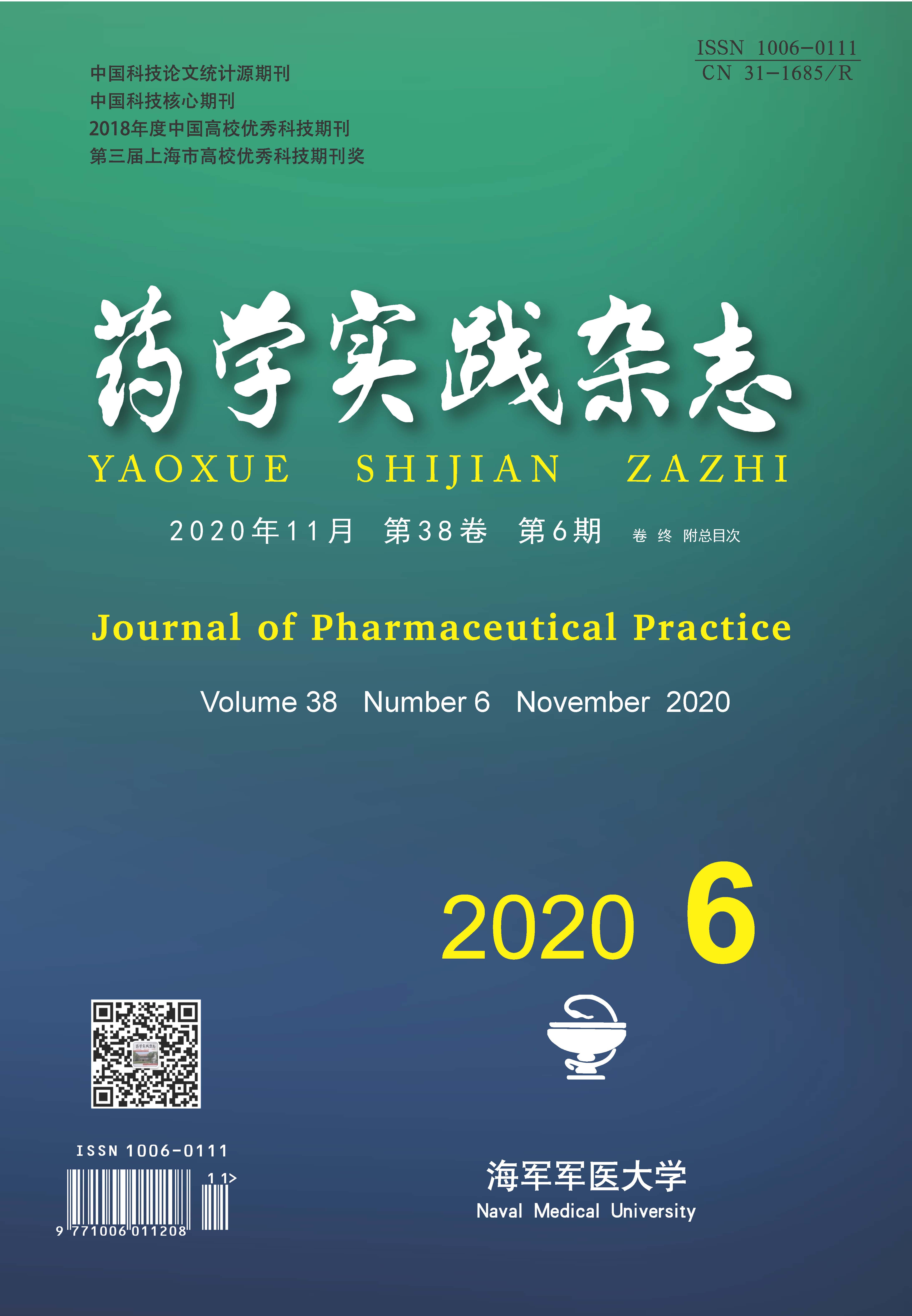-
盐酸安罗替尼(anlotinib hydrochloride, AL3818),商品名福可维,是一种以血管内皮生长因子(VEGF)受体、成纤维细胞生长因子(FGF)受体、血小板衍生生长因子(PDGF)受体、干细胞因子受体(c-kit)为靶点的新型口服多靶点酪氨酸激酶抑制剂(TKIs)[1]。2018年5月在我国批准上市,这是我国药企自主研发的1.1类新药,截止目前已获批3个适应证,分别为三线治疗非小细胞肺癌(NSCLC)、三线治疗小细胞肺癌(SCLC)以及二线治疗软组织肉瘤。安罗替尼对于治疗食管癌[2]、甲状腺髓样癌[3]和转移性肾细胞癌[4]等也有一定疗效。目前正在开展相关临床试验,以期获得药监部门批准更多的适应证。随着安罗替尼在临床上的推广应用,越来越多与其相关的药物不良反应(ADR)被报道。本文对安罗替尼上市后发表的有关其ADR的病例报道进行分析,以期为临床了解其ADR提供更多的真实数据,为更安全合理应用安罗替尼提供参考依据。
HTML
-
以“安罗替尼”或“福可维”为关键词检索中国知网、万方和维普数据库,以“anlotinib”或“AL3818”为关键词检索Web of Science、Pubmed、Wiley Online Library数据库,检索时段为2018年5月至2020年6月,收集公开发表的与安罗替尼上市后相关ADR的病例报道。
-
纳入标准:根据《药品不良反应报告和监测管理办法》,评价ADR与安罗替尼关联性为肯定、很可能或可能的病例报道。排除标准:①重复文献;②病例报道主要以观察个案疗效为主的文献;③对ADR描述不详细的文献;④临床试验;⑤综述。
-
采用回顾性研究方法,详细阅读纳入研究的文献,提取患者的性别、年龄、既往病史、用药原因、合并用药情况(仅记录主要治疗药物)、用药剂量、出现ADR的时间、ADR名称及临床表现、针对ADR的处理方法及转归等信息,根据《监管活动医学词典》(MedDRA 22.1版)对ADR累及的系统/器官进行分类统计。
1.1. 资料来源
1.2. 纳入和排除标准
1.3. 研究方法
-
共检索到89篇相关的病例报道文献,经过筛选得到符合要求的文献共18篇,合计纳入20个病例。对纳入的文献进行信息提取汇总,详细结果见表1。
序号 性别 年龄/岁 用药原因 合并用药 ADR名称 ADR处置 转归 再暴露 1[5] 男 50 NSCLC PD-1抑制剂 头晕、头痛、视物模糊、高血压 停药;甲钴胺片、羟考酮控释片、氨氯地平 好转 未使用 2[6] 男 59 NSCLC 无 食欲减退、乏力、低钠血症 停药;补钠、限水、托伐普坦 好转 未使用 3[7] 女 75 NSCLC 吉非替尼 皮下出血 停药 好转 未使用 4[8] 女 70 SCLC 无 头晕、高血压 停药 好转 未使用 5[9] 女 55 卵巢癌 无 肿瘤溶解综合征、头晕、视物模糊、尿隐血及蛋白尿 停药;水化、碱化尿液 好转 未使用 6[10] 男 39 NSCLC 无 手足综合征、高血压、高脂血症 减量至10 mg,5 d后停药;特比萘芬软膏、替米沙坦、阿托伐他汀钙片 好转 未使用 7[11] 女 36 NSCLC 无 高血压、急性心肌梗死 停药;抗血小板、调脂、改善循环 好转 未使用 8[12] 男 52 NSCLC 无 咳嗽、咯血 蛇毒血凝酶、云南白药 好转 未停药 9[12] 女 48 NSCLC 无 乏力、食欲减退、转氨酶升高、胆红素升高 腺苷蛋氨酸 好转 未停药 10[12] 男 74 NSCLC 无 头晕、乏力、高血压、蛋白尿 减量至10 mg;控制血压 好转 未停药 11[13] 女 67 NSCLC 替吉奥 过敏性紫癜 停药;抗感染、激素,保肾、利尿、补充白蛋白 好转 未使用 12[14] 女 76 卵巢癌 无 乏力、高血压、手足综合征 停药;卡托普利、氨氯地平 好转 未诱发ADR 13[15] 男 73 SCLC 无 间质性肺炎 停药;抗感染、激素、支持治疗 好转 未使用 14[16] 男 73 NSCLC 无 高血压 奥美沙坦、硝苯地平 好转 未停药 15[17] 男 68 NSCLC 无 高血压 硝苯地平、缬沙坦 好转 未停药 16[18] 男 69 NSCLC 无 口腔黏膜炎、支气管胸膜瘘 停药;抗感染、支持治疗 死亡 无 17[19] 女 61 NSCLC 无 头痛、恶心 停药 好转 未使用 18[20] 男 58 NSCLC 无 口腔黏膜炎、手足综合征、高脂血症、高血压、主动脉夹层 停药;手术、抗凝、控制血压 好转 未使用 19[21] 女 61 胶质母细胞瘤 无 血小板降低、高血压 停药;硝苯地平 好转 未使用 20[22] 女 66 胆管癌 无 咳嗽、胸闷、手足综合征、高血压 停药;抗过敏、美洛昔康片、控制血压 好转 未诱发ADR -
纳入研究的20个病例中,男性10例,女性10例,男女比例为1∶1。患者的平均年龄为61.5岁,年龄中位数为63.5岁(最小年龄36岁,最大年龄76岁)。
-
使用安罗替尼治疗NSCLC的病例数最多,其中超说明书用药4例(20.0%),见表1。
-
所有20例病例的起始给药方案均采用说明书推荐的给药方案,即口服安罗替尼12 mg/d,连续服药2周,停药1周。2例(10.0%)因发生不良反应减量至10 mg/d。
-
使用安罗替尼的20例患者中,4例(20.0%)出现1种ADR,7例(35.0%)出现2种ADR,3例(15.0%)出现3种ADR,5例(25.0%)出现4种ADR,1例(5.0%)出现5种ADR,出现ADR共52例次。除6例次发生时间不详外,其余46例次ADR发生时间见表2。
ADR出现时间(t/d) 例次 构成比(%) 1~7 6 13.0 8~14 11 23.9 15~21 3 6.5 22~30 3 6.5 31~60 16 34.8 ≥61 7 15.2 合计 46 100.0 -
安罗替尼所致的ADR累及9个系统/器官,其中以血管与淋巴系统最为常见,其次是皮肤及皮下组织、神经系统、代谢系统等,详见表3。
系统/器官 临床表现(例次) 总例次 构成比(%) 血管与淋巴管 高血压(11) 11 21.15 皮肤及皮下组织 手足综合征(4)、皮下出血(1)、过敏性紫癜(1) 6 11.54 神经系统 头晕(4)、头痛(2) 6 11.54 代谢及营养类 食欲减退(3)、高脂血症(2)、低钠血症(1) 6 11.54 呼吸系统、胸及纵隔疾病 咳嗽(2)、咯血(1)、间质性肺炎(1)、支气管胸膜瘘(1) 5 9.61 胃肠系统 口腔黏膜炎(2)、恶心(1) 3 5.77 心脏 胸闷((1)、急性心肌梗死(1)、主动脉夹层(1) 3 5.77 眼睛 视物模糊(2) 2 3.85 其他 蛋白尿(2)、血尿(1)、转氨酶升高(1)、胆红素升高(1)、血小板降低(1)、乏力(4) 10 19.23 合计 52 100.00 -
20例病例中,大部分患者经处理后好转,1例(5.0%)停药且对症处理后死亡,见表1。
2.1. 患者年龄与性别分布
2.2. 用药原因
2.3. 给药途径及剂量
2.4. ADR发生数分布和出现时间
2.5. ADR累及系统/器官
2.6. 不良反应处理及转归
-
安罗替尼在我国上市3年,上市时间短,与其相关的ADR病例报道数量较少,本文对18篇文献进行信息提取,仍提取到说明书未提及的ADR,包括过敏性紫癜、支气管胸膜瘘、急性心肌梗死和主动脉夹层。
-
目前与安罗替尼相关的ADR案例报道数量较少,暂时无法通过纳入研究的20个病例的基本信息分析其与ADR之间的相关性。发生ADR的患者平均年龄为61.5岁,可能与中老年患者肿瘤发病率较高有关。
-
从表2可以看到,大部分不良反应发生在用药2个月后。安罗替尼半衰期(t1/2)为(96±17)h,其较长的t1/2会使血药浓度升高导致药物积聚,连续给药后在第14天可达到最高血药浓度[23]。因此,安罗替尼说明书建议连续给药2周,停药1周。用药后第3周内ADR发生率比第1周和第2周低,可能与安罗替尼给药方案有关。但由于个体差异,ADR发生与时间的关系仍需进一步研究。
-
VEGF是安罗替尼的作用靶点之一,研究表明VEGF抑制剂与各种心血管疾病(包括高血压、缺血性心脏病、心力衰竭、QT间隔延长和血栓栓塞)发生率增加相关[24-26]。提取到的52例次ADR中,累及的系统/器官分类占比最高的为血管与淋巴系统,均为高血压。与本文提取到的结果相同,安罗替尼的临床研究中,高血压也是最常见的ADR[27]之一。高血压是VEGF抑制剂常见的ADR且存在剂量依赖性,但其机制尚不明确[28]。使用安罗替尼致高血压应及时处理,控制血压最常用的是血管紧张素转换酶抑制剂(ACEI)或血管紧张素II受体拮抗剂(ARB),若控制不佳,可以加用其他降压药(如钙离子拮抗剂、利尿剂、β受体阻滞剂等)。值得注意的是,安罗替尼通过CYP3A4酶代谢,应避免同时使用CYP3A4酶抑制剂(如维拉帕米或地尔硫䓬等)[27]。研究结果表明[29],既往存在高血压病史、高龄和超重是VEGF抑制剂诱发高血压的重要危险因素。因此,具有高危因素的患者在临床上使用安罗替尼时,医生及临床药师更应密切关注患者血压以及因高血压引起的一系列并发症,并进一步研究这些因素之间复杂的相关性[30]。
VEGF抑制剂与可逆性后部白质脑病综合征(PRES)的风险增加相关[31]。1号病例[5]考虑可能为安罗替尼导致PRES,PRES通常是可控的,但若未能及时发现,可能会导致严重和永久性的中枢神经系统损伤,甚至死亡。针对PRES尚无较为成熟的防治方案,因此临床上应用安罗替尼应警惕PRES不良反应的相关症状,及时对症处理。
-
研究表明,肾脏损伤与VEGF抑制剂有关,通常表现为蛋白尿,血尿,偶见血清肌酐升高[32]。VEGF抑制剂诱导蛋白尿的机制可能为抑制足细胞上的VEGF、诱导肾小球内皮细胞脱离和肥大以及导致肾小球血栓性微血管病等[33]。在ALTER-0303(安罗替尼治疗NSCLC Ⅲ期临床试验)研究中蛋白尿发生率为28.9%,建议尿蛋白≥2.0 g/L的患者应停用安罗替尼,直至蛋白尿<1.0 g/L,然后以较低的剂量恢复用药[27]。Zhang等[34]在一项真实世界研究中观察到使用安罗替尼后蛋白尿发生率为17.3%。本文也提取到蛋白尿2例次,血尿1例次。持续大量的蛋白尿会影响肾功能,对患有肾脏疾病和心血管疾病的患者危害更大,因此,定期监测和及时控制蛋白尿十分重要,建议对于决定开始使用安罗替尼的患者,应评估患者是否存在肾脏疾病,并在每个周期治疗前,进行尿蛋白定量检测。治疗上使用ACEI或ARB可减少蛋白尿,控制盐分摄入以及使用糖皮质激素可能会使足细胞的细胞骨架稳定从而减少蛋白尿[33]。
-
在ALTER-0303研究中,发现安罗替尼所致的皮肤及其皮下组织ADR的患者中,有数例是由于手足综合征导致的药物减量[27]。本文提取到使用安罗替尼出现6例次累及皮肤及皮下组织的ADR。迄今为止,尚未阐明酪氨酸激酶抑制剂(TKIs)导致手足综合征的确切机制,其可能机制[33]为:①毛细血管中的药物浓度增加;②血管修复受损,导致细胞凋亡和产生炎症;③干扰内皮细胞生存机制。严重的手足综合征会导致疼痛、感染甚至影响日常生活。因此,发生手足综合征的患者,应根据其严重程度予以治疗,在使用安罗替尼期间,建议患者使用软鞋垫等保护脚的压力点。对于手足综合征评级为1~2级的患者可局部使用润肤剂、抗生素或可的松软膏等处理,≥3级的应考虑停药[27,33]。
-
本文观察到16号病例[18]使用安罗替尼后发生支气管胸膜瘘,这是目前考虑与安罗替尼相关的支气管胸膜瘘ADR首例报道,且该患者因支气管胸膜瘘死亡。安罗替尼说明书未提及支气管胸膜瘘不良反应,可能由于临床试验样本量较小、研究观察周期短有关,这也提示医生和临床药师应警惕说明书未提及的ADR。安罗替尼已获批3个适应证,预计有越来越多的患者因使用安罗替尼获益。但其ADR发生率较高(尤其是心血管系统),临床使用过程中应密切监测,同时应注意在长期使用过程中出现新的或严重的ADR。
本文的不足之处在于:①安罗替尼2018年5月在中国上市,应用时间较短,目前上市后发表的相关文献较少,因此本文获得的病例数较少;②由于不同的文章采用的不良反应分级版本不同,且部分文章未对ADR进行分级,因此本文未对不良反应分级进行统计分析。








 DownLoad:
DownLoad: